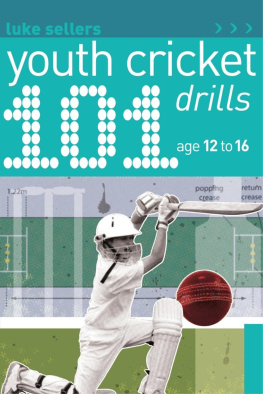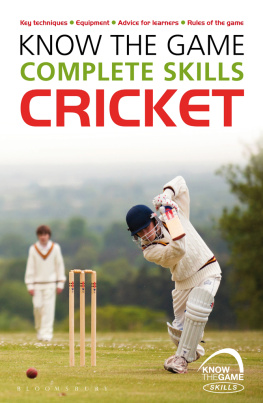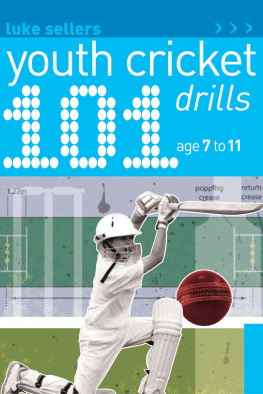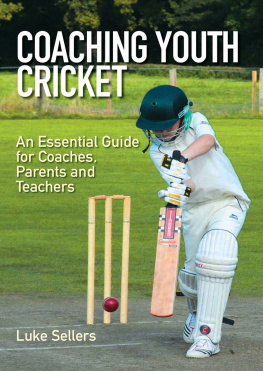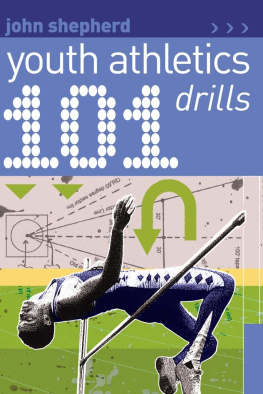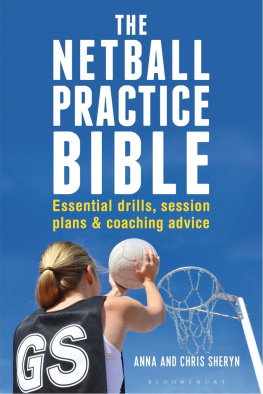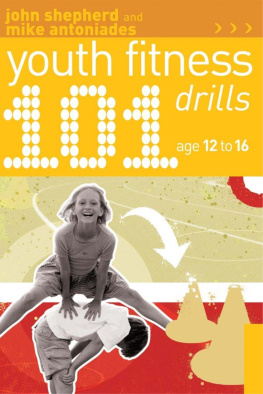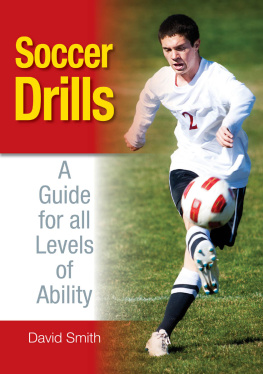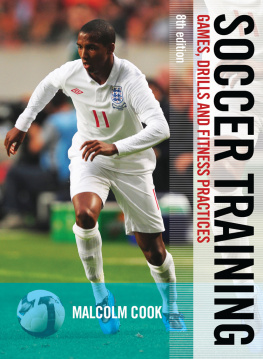
This book is designed to support coaches and teachers to deliver fun and challenging sessions to develop players aged 1216. The focus is on adding to players basic skills and helping them apply them in competitive games and match situations. At this age we are looking to broaden players skills to cover the four main performance factors of sport; technical, tactical, physical and mental. All these areas are covered in the book. Cricket is often perceived as a complex sport and as coaches our aim is to make it as simple and accessible as possible. Therefore the drills in this book are quick and easy to set up and many of them can be driven by the players themselves. They are designed so that players of all abilities can find a level of challenge that is appropriate to them in every practice.
It is vital that while helping players improve and develop, the main aim of any session should be to make it fun. As coaches we need to make sure that players are given enjoyable cricket experiences and want to come back each week. I hope this book will help give you the basic framework and ideas to deliver fun and stimulating sessions that are enjoyable for both the players and you, the coach.
Note:
The practices in this book have been designed to be carried out with either a soft ball or hard ball. The type of ball used is at the coach's discretion depending on the experience of their players and the space they are operating in. If you are using a hard ball please ensure that batters and wicketkeepers wear the appropriate protective equipment. In some drills you may also need to adjust the distance fielders stand from the batter if you are using a hard ball instead of a tennis ball.
| 
|
A great coaching session should contain three main elements: fun, safety and learning. The challenge for you as a coach is to make sure that every young player has an enjoyable coaching session in a safe, supportive environment, and learns something new in each session. It is hoped that this book will give you lots of new ideas to help you and your players get the maximum from your coaching sessions. In addition to the practices in the book there are some hints to help you develop your coaching and use the book effectively.
Coaching players aged 1216 is all about taking the basic technical skills and athletic attributes players already have and developing them further while still making sessions fun. At this stage players should learn more complex techniques, and begin to specialise and find their role in a team. The challenge for you is to support the players in using their skills to achieve success in a game situation. As well as the key technical and tactical skills, players should also develop their physical and mental attributes. Sessions should still be varied and fast paced, but at this stage a lot of the drills will be done in small groups with players starting to take on the responsibility for their own learning. You should take more of a stand-back approach to allow players to find their own solutions and think for themselves. Players should be encouraged to reflect, and you should use questioning to review games and coaching sessions. Finally and most importantly great coaching is about coaching the person, not just about the sport. Treat each player as an individual and adapt the sessions to the ability, attitude and enjoyment of your group of players.
Planning
It is crucial to plan your coaching sessions in advance. This will ensure that your sessions are safe, allow you to stay in control of a session and avoid wasting time. A good session can take many forms, but presented below is a good basic structure to build on. This book is designed so that the different practices can fit into this format in an easy cut and paste style, to help you come up with an effective session.
Simple plan for a 1-hour session
10 minutes warm-up
1030 minutes skill drill
25 minutes game or skill progression
5 minutes cool-down or debrief
Use the warm-ups, skill drills, games and cool-downs in the book to slot into your simple session plan. There is more information on each area later in the book.
Safety
Your plan should also include the equipment you need, the size of the space you have to work in, the number of players, assistant coaches available and the key safety issues for the session. You should complete a risk assessment for each venue you coach in, and check the facilities and equipment before use to make sure they are safe.
Making the session fun
Challenge
The key to making a session fun is to provide players with the appropriate level of challenge in a safe and supportive environment. If a session is too easy, players will lose interest and focus. If a session is too difficult, they will become disillusioned and give up on a task this can often lead to a breakdown in behaviour.
The grading system used in this book
To help you gauge the appropriate level of challenge for your players, all the drills presented in this book are labelled with a simple 13 grading system (you will see the relevant number next to the title of the drill on each page). Drills rated 1 are easy practices for young or inexperienced players. They can also be effective as an exercise to help more experienced players recap on previous skills they have learned. Drills rated 2 are a medium level of difficulty; they involve more complex technical skills or may present an increased challenge by adding technical, mental or physical skills to a technical drill. Finally, those drills rated 3 are designed for the most experienced players. You can mix or match practices of different levels, but it may be a good idea to start players off on an easier practice and observe their performance. Once they have successfully achieved a particular skill graded 1 they should move on to the harder practices in subsequent sessions.
Try to make sure the level of challenge increases during the session and from one session to the next, to make sure all the players have fun. Dont move on unless the players are achieving success at the original skill.
Numbers
Another thing that will affect a players enjoyment of a session is their involvement in a practice. Players will become bored and distracted if they are not constantly involved. You should organise the amount of space and equipment on offer to make sure as many players as possible are involved at one time. The majority of drills in the book can be performed in pairs and all can be implemented in small groups. Where possible, try to work at skill practices in groups of no more than six, and adapt the rules of games where necessary so as many players are involved as possible.
Rate
Make sure that sessions maintain energy and a fast pace so players are not doing the same practice for too long. Young players sometimes have short attention spans. Most individual practices should last no longer than 15 minutes, while games, nets and more complex technical practices should last longer, depending on numbers.
Positive feedback
For players to enjoy sessions it is essential that you are positive and praise them regularly. You should make sure that you praise every player and comment on their effort not just their ability so that players of all levels receive positive feedback. This feedback can be given one to one or in front of the group. Where possible, give specific feedback to help reinforce key coaching points for example, Fantastic throw! You were in a really balanced position and your non-throwing arm was pointing right at the target.
Next page
